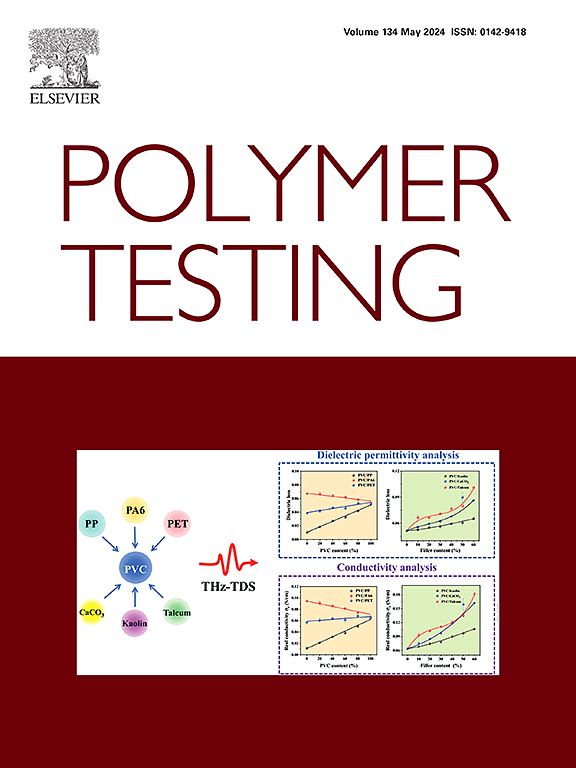Investigating the nano-scale creep behavior of BOPA6 films via nanoindentation
IF 5
2区 材料科学
Q1 MATERIALS SCIENCE, CHARACTERIZATION & TESTING
引用次数: 0
Abstract
In this study, the nano-scale creep behavior of biaxially oriented polyamide 6 (BOPA6) films was investigated via instrumented nanoindentation. A modified empirical equation was proposed to characterize the evolution of strain rate during the loading stage, showing excellent agreement with the experimental data (R2 > 0.99). It was observed that an elevated loading rate resulted in higher strain rates and smoother strain-displacement curves, indicating a transition from thermally activated localized deformation to stress-driven cooperative mechanisms, as described by the Eyring activation model. In the holding stage, a power-law equation was used to analyze the creep behavior and determine the creep stress exponent n. It can be found that the value of n increased significantly with the elevated maximum holding load, suggesting enhanced stress sensitivity and the activation of viscoplastic mechanisms. These time-dependent deformation mechanisms were further interpreted within the framework of the Eyring activation model, which clarified the transition from local thermally activated molecular rearrangement to stress-driven cooperative deformation. Overall, these results deepen the understanding of nano-scale creep behavior in semi-crystalline polymers and offer theoretical guidance for enhancing the mechanical properties of BOPA6 films in advanced packaging and flexible electronics.
利用纳米压痕研究BOPA6薄膜的纳米蠕变行为
本研究采用纳米压痕技术研究了双轴取向聚酰胺6 (BOPA6)薄膜的纳米蠕变行为。提出了一个修正的经验方程来描述加载阶段应变速率的演变,与实验数据(R2 >;0.99)。研究发现,加载速率的提高导致应变速率的提高和应变-位移曲线的平滑,表明了由热激活的局部变形向应力驱动的协同机制的转变,正如Eyring激活模型所描述的那样。在抱持阶段,采用幂律方程分析蠕变行为,确定蠕变应力指数n。可以发现,随着最大抱持载荷的增大,n值显著增大,表明应力敏感性增强,粘塑性机制激活。这些随时间变化的变形机制在Eyring活化模型框架内得到进一步解释,阐明了从局部热激活的分子重排到应力驱动的协同变形的转变。总的来说,这些结果加深了对半晶聚合物纳米级蠕变行为的理解,并为提高BOPA6薄膜在先进封装和柔性电子中的机械性能提供了理论指导。
本文章由计算机程序翻译,如有差异,请以英文原文为准。
求助全文
约1分钟内获得全文
求助全文
来源期刊

Polymer Testing
工程技术-材料科学:表征与测试
CiteScore
10.70
自引率
5.90%
发文量
328
审稿时长
44 days
期刊介绍:
Polymer Testing focuses on the testing, analysis and characterization of polymer materials, including both synthetic and natural or biobased polymers. Novel testing methods and the testing of novel polymeric materials in bulk, solution and dispersion is covered. In addition, we welcome the submission of the testing of polymeric materials for a wide range of applications and industrial products as well as nanoscale characterization.
The scope includes but is not limited to the following main topics:
Novel testing methods and Chemical analysis
• mechanical, thermal, electrical, chemical, imaging, spectroscopy, scattering and rheology
Physical properties and behaviour of novel polymer systems
• nanoscale properties, morphology, transport properties
Degradation and recycling of polymeric materials when combined with novel testing or characterization methods
• degradation, biodegradation, ageing and fire retardancy
Modelling and Simulation work will be only considered when it is linked to new or previously published experimental results.
 求助内容:
求助内容: 应助结果提醒方式:
应助结果提醒方式:


